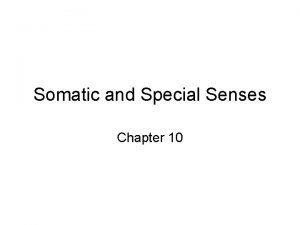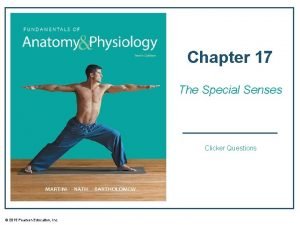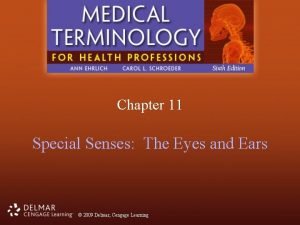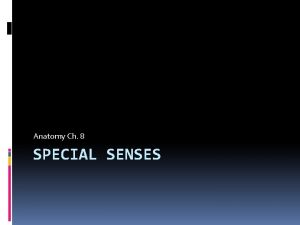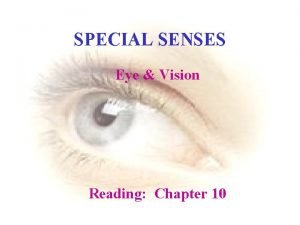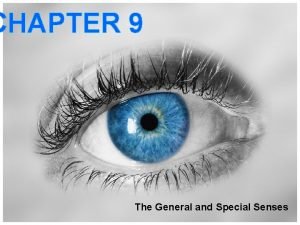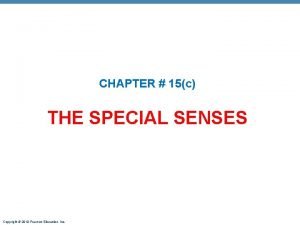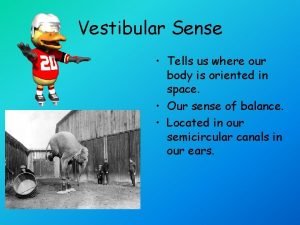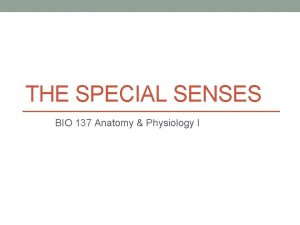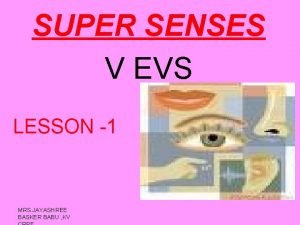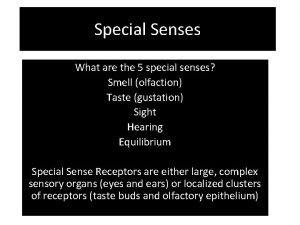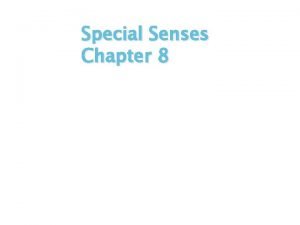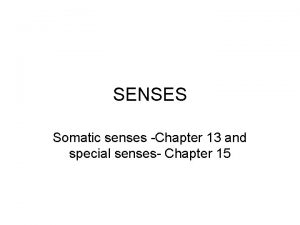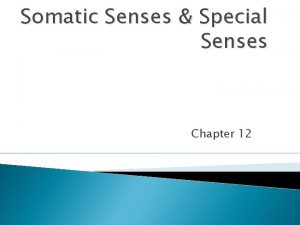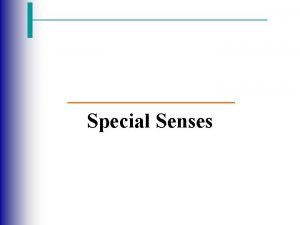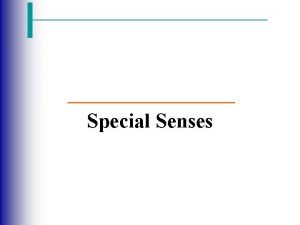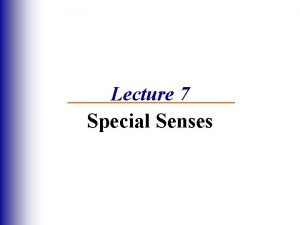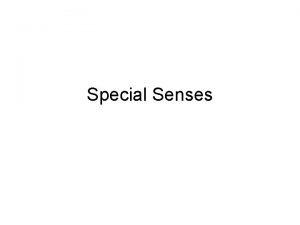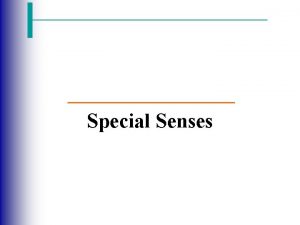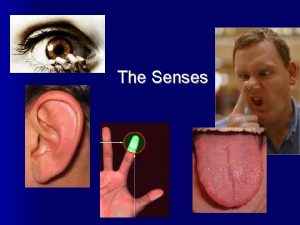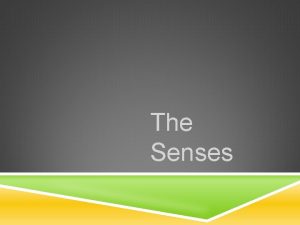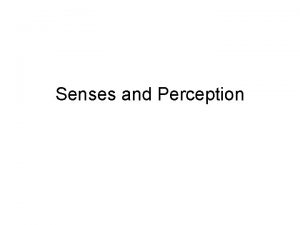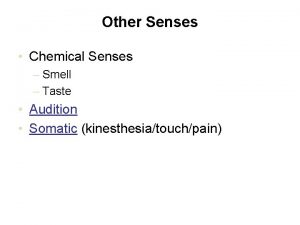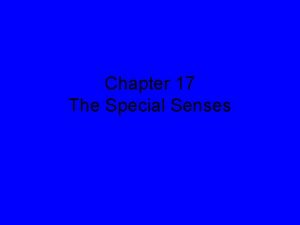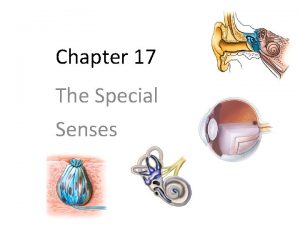Chapter 6 E Other Senses DoNow Discussion What




















- Slides: 20

Chapter 6 (E): Other Senses

Do-Now (Discussion) § What are some vital characteristics of the following senses: § Touch § Kinesthesis § Vestibular § Taste § Smell

Touch § Touch: § Includes four distinct skin senses: § Pressure § Warmth § Cold § Pain

Homunculus

Touch § Kinesthesis: § The system for sensing the position and movement of individual body parts Whirling Dervishes

Touch § Vestibular Sense: § The sense of body movement and position, including the sense of balance § Located in the inner ear Wire Walk

Touch § What do you think are some effects of an overactive vestibular sense? § An underactive vestibular sense?

Touch: Understanding Pain § Gate-Control Theory: § The theory that the spinal cord contains a neurological “gate” that blocks pain signals or allows them to pass on to the brain § The “gate” is opened by the activity of pain signals traveling up small nerve fibers and is closed by activity in larger fibers or by information coming from the brain § E. g. Rubbing the area around a stubbed toe will create competing stimulation that will block some pain messages

Touch: Understanding Pain §In addition to physiological factors, what else influences our perception of pain?

Biopsychosocial Influences of Pain

Touch: Understanding Pain § Methods of Pain Control: § Drugs § Surgery § Acupuncture § Exercise § Hypnosis § Thought Distraction

Taste Sweet Sour Salty Bitter Umami (Fresh Chicken)

Taste § From an evolutionary perspective, why do you think we are sensitive to each of the five types of taste?

Taste § Survival Functions of Taste: § Sweet: Energy source § Salty: Sodium essential to physiological processes § Sour: Potentially toxic acid § Bitter: Potential poisons § Umami: Proteins to grow and repair tissue

Smell § Like taste, smell is a chemical sense. § Odorants enter the nasal cavity to stimulate 5 million receptors to sense smell. § Unlike taste, there are many different forms of smell.

Smell

Smell: Associations with Memory § Can you think of a smell that elicits a particular memory? § Why do you think this occurs?

Smell: Associations with Memory

Sensory Interaction § Sensory Interaction: § The principle that one sense may influence another § E. g. the taste of strawberry interacts with its smell and its texture on the tongue to produce flavor

Review § How does the Gate-Control Theory explain our perception of pain? § What are the survival functions of each of the five types of taste? § Why do smells often trigger memories? § Provide an example of sensory interaction.
 What is the difference between somatic and special senses
What is the difference between somatic and special senses Special vs general senses
Special vs general senses Distillation discussion
Distillation discussion The other wes moore introduction
The other wes moore introduction Thermoreceptors
Thermoreceptors Chapter 17 special senses answer key
Chapter 17 special senses answer key Learning exercises chapter 11 medical terminology
Learning exercises chapter 11 medical terminology Anatomy and physiology chapter 8 special senses
Anatomy and physiology chapter 8 special senses Eye anatomy
Eye anatomy Chapter 10 special senses
Chapter 10 special senses The general and special senses chapter 9
The general and special senses chapter 9 Olfactory receptor cells
Olfactory receptor cells Chapter 15 special senses
Chapter 15 special senses Other initiated other repair
Other initiated other repair Vestibular senses
Vestibular senses Bio 137
Bio 137 Language
Language 5 senses and 5 elements
5 senses and 5 elements Epiglottis taste buds
Epiglottis taste buds Super senses of cow
Super senses of cow 5 basic tastes
5 basic tastes




